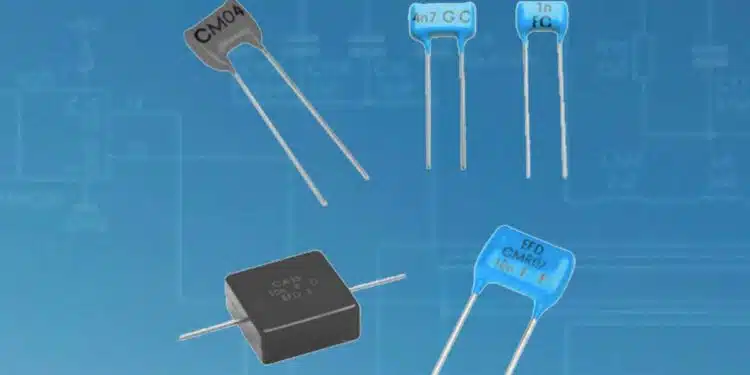Exxelia is pleased to announce four series of MICA capacitors that suits RF circuit requirements in military, aerospace or medical applications.
Unlike other capacitor technologies, MICA capacitors offer exceptional stability and reliability without unwanted characteristics. As a trusted supplier, Exxelia mica capacitors are widely used in military, aerospace, medical and instrumentation industries.
Mica capacitors are valued for their stability and reliable performance across a wide range of applications. They maintain consistent electrical characteristics over time and across temperature variations, making them suitable for use in critical environments.
Exxelia’s silver MICA capacitors are designed to offer performance, stability, precision and reliability, and include series designed as per MIL standards. They offer a high Q factor that reduces energy loss, enhancing efficiency, particularly in RF applications. These capacitors are designed to withstand demanding conditions, supporting voltage ratings up to 1kV DC and operating temperatures up to +150°C. Besides, Exxelia offers custom design option and ensures long-term product availability without obsolescence.
Exxelia offers four products series of MICA capacitors:
The CMR Series built to MIL-PRF-39001 standards, exemplifies precision and reliability. Ideal for RF applications, these silvered MICA capacitors deliver a high Q factor, ensuring minimal energy loss and consistent performance even under extreme conditions, with a capacitance range from 1 pF to 12,000 pF and voltage ratings up to 500V. Operating across a temperature span of -55°C to +150°C, they are engineered for environments where performance is non-negotiable.
For applications requiring robust endurance at elevated temperatures, the CM Series is the go-to choice. Designed to operate up to +150°C and conforming to MIL-C-5 standards, these capacitors combine exceptional thermal stability with capacitance values between 200 pF and 12,000 pF and voltage ratings up to 500V. Their low dielectric losses make them indispensable in sectors like aerospace and military, where resilience in harsh environments is crucial.
Complementing these ranges is the MF Series, a high-reliability solution crafted for precision in critical applications. With capacitance values spanning from 4.7 pF to 33 nF and voltage ratings up to 1kV, these dipped mica capacitors deliver excellent temperature stability and high Q performance, particularly suited for RF systems and sensitive instrumentation. Their compact design and reliable performance make them a trusted choice for precision-oriented technologies.
The CA Series rounds out the offering with its superior capabilities in high-rel applications. Featuring capacitance values from 0.005 nF to 0.1 µF and voltage ratings up to 1kV, these silvered mica capacitors excel in RF and microwave applications.
Operating within a temperature range of -55°C to +125°C, they combine a high Q factor and low ESR to deliver exceptional performance and minimal energy loss in the most demanding conditions.
These four series demonstrate the versatility and durability of mica capacitors, providing customized solutions for a broad spectrum of critical applications across industries that demand the highest levels of precision and reliability.
































